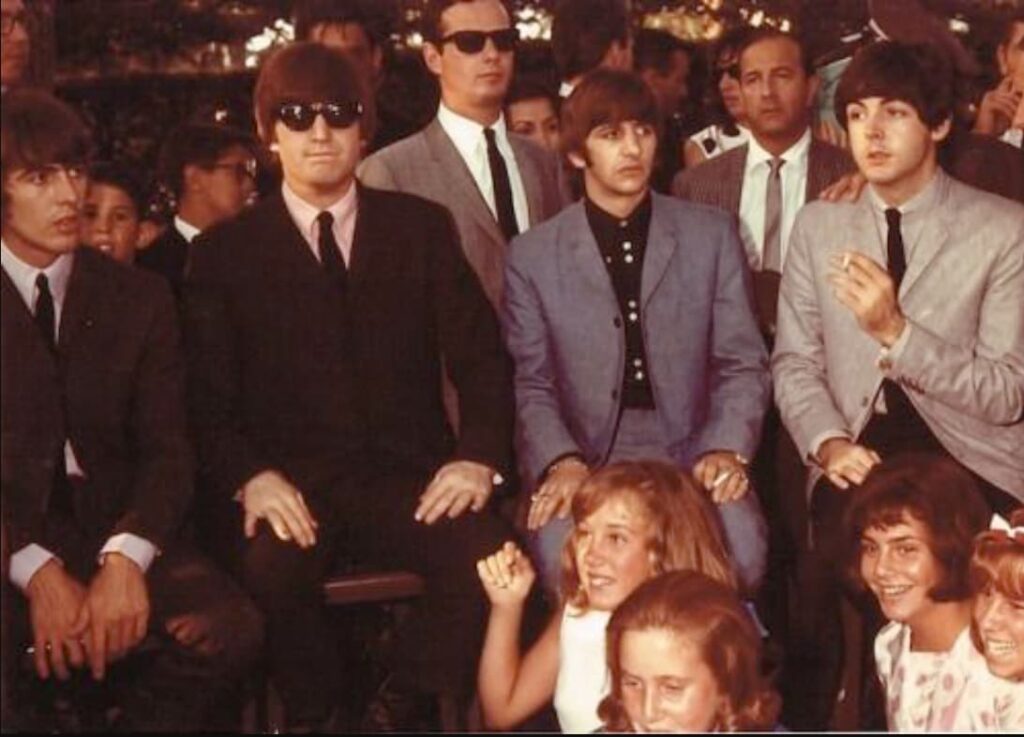
An enduring anthem for the carefree, free-wheeling soul of the 1960s.
The late 1960s were a turbulent, yet vibrant time in America. The air was thick with the scent of change, protest, and a new kind of freedom that was both exhilarating and, for some, a little frightening. The music reflected this complex tapestry, moving from the innocence of early rock and roll to the psychedelic experimentation of the burgeoning counterculture. And right in the middle of it all, a song came along that seemed to capture the very essence of the “Summer of Love” in a perfect, three-minute pop package: “Windy” by The Association.
The song, released in May 1967 on the album “Insight Out,” was an immediate sensation. It wasn’t just a hit; it was a phenomenon, soaring to the top of the charts and claiming the coveted number one spot on the Billboard Hot 100 in July, where it stayed for an impressive four weeks. This was the group’s second number one hit, following the romantic ballad “Cherish” from the previous year. “Windy” was a testament to the group’s knack for creating intricate harmonies and melodies that were both sophisticated and utterly irresistible. It also ranked as the number four song for the entire year of 1967, solidifying its place in the annals of pop music history.
But what’s the story behind this iconic tune? The song was penned by a young folk singer-songwriter named Ruthann Friedman, who at the time was living in an apartment at David Crosby’s house in Los Angeles. She wrote it in about 20 minutes, initially inspired by a male lover and friend she considered a “hippie” living a carefree life in San Francisco’s Haight-Ashbury district. The original version was even a 3/4 waltz! When she played it for The Association, they immediately saw its potential, but they made some key changes. They changed the gender of the subject to a woman, and transformed the waltz into a more upbeat, pop-friendly 4/4 time signature. This transformation was pure alchemy, turning a simple folk tune into a majestic pop anthem. The lyrics themselves, with their whimsical imagery of “a name that’s lighter than air” and a person “tripping down the streets of the city, smilin’ at everybody she sees,” painted a vivid picture of a free-spirited, enigmatic individual who embodied the hopeful, idealistic energy of the time. The song’s meaning, therefore, is a celebration of that uninhibited, almost magical individual who moves through life with a natural grace and infectious positivity.
The Association‘s rendition of “Windy” is a masterclass in production and arrangement. The layered vocals, a hallmark of the group’s sound, are a dizzying, beautiful swirl of harmony. The song’s instrumental texture, with its blend of harpsichord, recorders, and a mutated surf-guitar riff, is a perfect example of “sunshine pop,” a genre that blended pop-rock with psychedelic influences and a bright, optimistic feel. The lead vocals, primarily handled by guitarist Larry Ramos and percussionist Russ Giguere, are crisp and full of youthful exuberance. And if you listen closely to the final moments of the track, you can even hear a whole chorus of voices—including Ruthann Friedman herself and other people in the studio—joining in, a tired but triumphant sound of a long night of recording. The fact that the vocals were so meticulously layered meant the recording session was grueling, lasting from early afternoon until 6:30 a.m. the next morning, but the results speak for themselves.
Looking back on “Windy” now, it’s more than just a song. It’s a time capsule. It evokes memories of a time when the world felt wide open, full of possibilities, and a new generation was finding its voice. It’s the sound of summer, of youth, and of a particular kind of innocent freedom that may never exist in quite the same way again. It’s a song to put on when you want to remember that feeling of being young and unburdened, when the future was a bright, shimmering horizon.